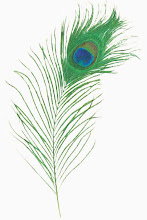क्रिस्टीज की भारत में दूसरी नीलामी दिसंबर में
मूमल नेटवर्क, मुंबई।लंदन स्थित नीलामी घर क्रिस्टीज 11 दिसंबर को मुंबई में अपनी दूसरी नीलामी का आयोजन करने जा रहा है। उम्मीद की जा रही है कि पिछले साल की तुलना में इस बार कला संग्राहकों द्वारा कला बाजार में अधिक पूंजी निवेश किया जाएगा।
उल्लेखनीय है कि 2013 में मुंबई में क्रिस्टीज की पहली नीलामी में भारतीय कला बाजार के मूल्यों की स्थापना के लिहाज से अभूतपूर्व सफलता हासिल की थी। क्रिस्टी की पहली नीलामी में भारत में पहली बार अत्यधिक मूल्य में कला की बिक्री हुई थी। तब 6 करोड़, 59 लाख, 37 हजार, 500 रुपए की कुल बिक्री हुई थी, जो पूर्वानुमान से दुगनी थी।
पिछले दिनों भारत में हुई कला के खरीद फरोख्त से यह साबित हो चुका है कि अच्छी कलाकृतियां कला संग्राहकों को अधिक कीमत के बाद भी आकर्षित करती हैं। उदाहरण के लिए, पिछले महीने दिल्ली स्थित सैफ्रान आर्ट द्वारा एक नीलामी में कुल 83 कलाकृतियां 38 करोड़ में बेची गई। इस विक्रय में जहांगीर सबावाला की एक पेंटिंग की कीमत 3 करोड़ रुपए प्राप्त हुई थी।
पिछले महीने ही आधुनिक और समकालीन कला की एक ऑनलाइन नीलामी में एम.एफ. हुसैन, एस.एच. रजा और अंजलि इला मेनन सहित भारतीय कलाकारों की कृतियों से 20 करोड़ रुपए प्राप्त हुए थे। आस्तागुरू डॉट कॉम द्वारा हुई इस नीलामी में
रजा कीे 'भूमि' शीर्षक वाली एक पेंटिंग का मूल्य 3 करोड़ रुपए मिला था।
भारत में भारतीय कला की सफल बिक्री को देखते हुए क्रिस्टीज की एशियन आर्टस के अंतरराष्ट्रीय निदेशक अमीन जाफर इस साल दिसम्बर में होने वाली नीलामी से अच्छे परिणाम की उम्मीद कर रहे हैं। इस नीलामी के लिए अच्छी कलाकृतियों का चयन किया गया है।
अमीन जाफर ने जानकारी देते हुए कहा कि वह नीलामी में जंहागीर सबावाला द्वारा 1974 में बनाए गए एक लैण्डस्केप 'ग्रीन केप' के साथ तैयब मेहता का दुर्लभ पोटे्रट नीलाम किया जाएगा। इनकी नीलामी से 1.2 करोड़ से 1.8 करोड़ रुपए मिलने का पूर्वानुमान लगाया गया है। इसके साथ ही भूपेन खखर, सुबोध गुप्ता, राशिद राणा, मिठु सेन, भारती खेर, नीलिमा शेख और ठुकराल व टागरा के काम शामिल हैं।
पिछले साल कला बाजार की अच्छी प्रतिक्रिया देखकर क्रिस्टी ने भारत में एक वार्षिक नीलामी करवाने का फैसला किया है। जाफर कहते हैं, 'हम लंबे समय के लिए भारतीय बाजार के लिए प्रतिबद्ध हैं. हम 20 साल के लिए भारत में उपस्थिति बनाए हुए हैं, लेकिन अब वह वक्त आया है जो भारत में कला बाजार के लिए एक जीवंत और टिकाऊ भविष्य सुनिश्चित करेगा।
क्रिस्टी की दूसरी नीलामी के लिए हर कोई इंतज़ार कर रहा है क्योंकि यह सही मायने में भारतीय कला के लिए बाजार को परिभाषित करेगा। पहली नीलामी में कलाकृतियों का एक शानदार संग्रह था और क्रिस्टी इसके पीछे की पूरी ताकत थी। अब दूसरी नीलामी में गुणवत्ता और मूल्य के लिहाज से कुछ नए आयाम सामने आएंगे, यही आशा है।





















































